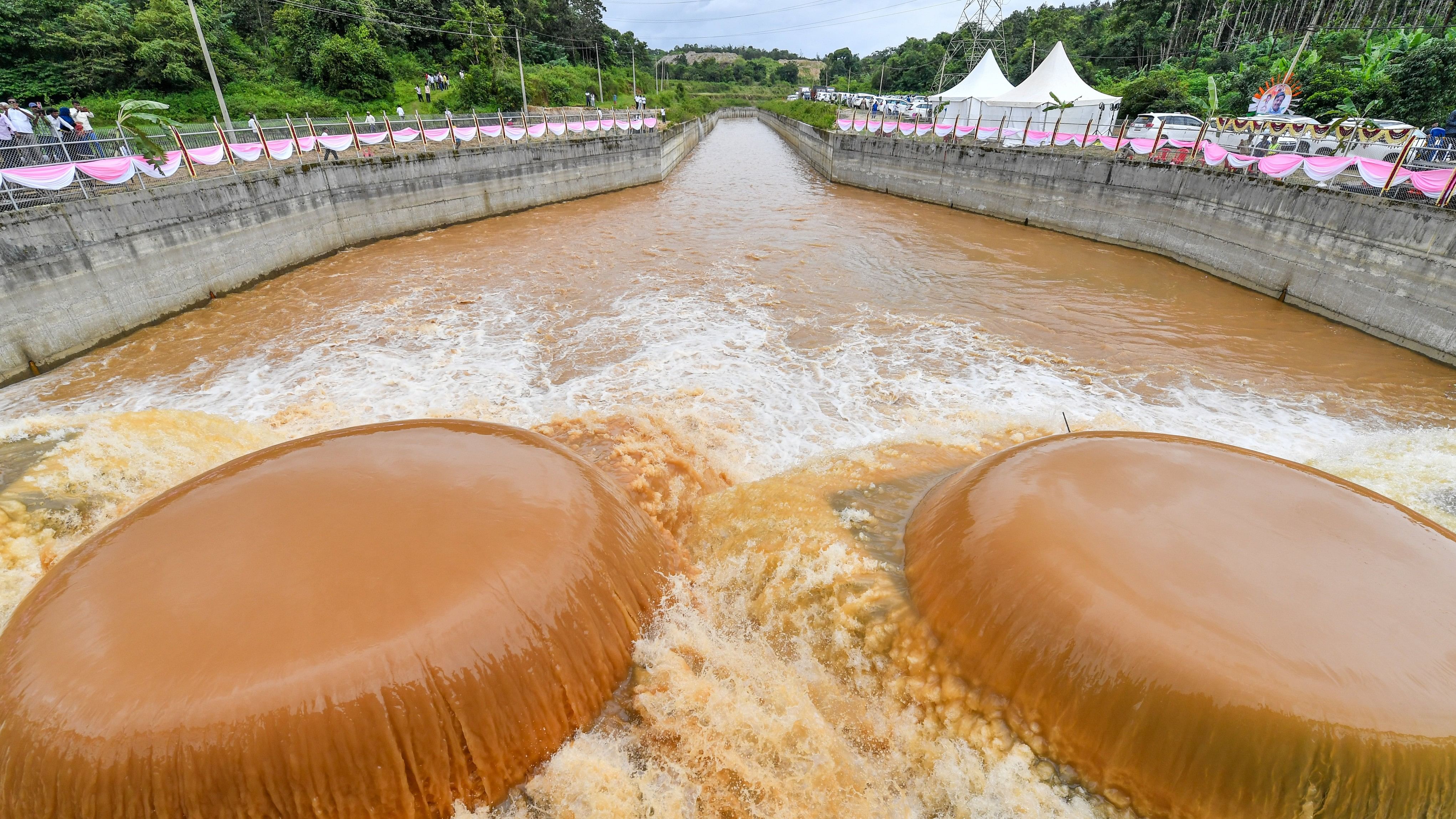
Credit: DH Photo
The recent inauguration of Stage 1 of the ambitious but controversial Yettinahole Integrated Drinking Water Project by Karnataka Chief Minister Siddaramaiah raises many questions about its effectiveness, ecological impact, and financial prudence. First conceived in 1972, when the G S Paramashivaiah Committee recommended diverting rivers and streams in Malnad region to feed water to the arid districts of Tumakuru, Kolar and Chikkaballapura, the project has over the years taken a much larger shape. As it stands today, the Yettinahole project aims to supply drinking water to the seven drought-prone districts of Hassan, Tumakuru, Chikkaballapura, Kolar, Bengaluru (Rural), and Ramanagara by harnessing the flood waters of the tributaries of Nethravati river during monsoon. The project cost, which was estimated at Rs 8,323 crore in 2012, went up to Rs 12,912 crore in 2014 and is now conservatively put at over Rs 23,000 crore. A near-tripling of cost within a dozen years is not a creeping rise in cost but an exploding one, suggesting that something is not quite right somewhere. With the completion of Stage 1, water will flow a distance of 31 km and from there will temporarily be diverted to the Vani Vilas Sagar Valley. In Stage 2, a 250-km gravity canal and feeder canals of several hundred km will be constructed to fill over 500 tanks in the parched districts.
Though the project has received the approval of the National Green Tribunal, questions have been raised on various fronts. Environmentalists who question the government’s claim that the flood would provide 24 tmc-feet of water, point out that the total yield will not exceed 6 tmc-feet. Thus, water will not reach the intended tail-end districts, defeating the very purpose of the project. The Centre has now, at this late stage, sought a report from the state on the ecological damage caused by the project. This is more political opportunism and grandstanding as much irreparable damage has already been wrought on the Western Ghats.
If completed as per plan, the project may well provide succour to at least some of the parched districts, but then the question is, does that justify the huge cost? Does the project justify the huge environmental and ecological damage? Couldn’t the government have thought of more viable options? There is now a proposal to bring Sharavati river water from Shivamogga to Bengaluru, again at a high ecological and financial cost. For how long will we bring water from hundreds of kilometres away to quench the thirst of our cities? Has the government taken into account the visible and forecast patterns of rainfall and water availability across the state in undertaking such projects? The government does not seem to have woken up to the perils of climate change even after catastrophes like the Wayanad landslide.